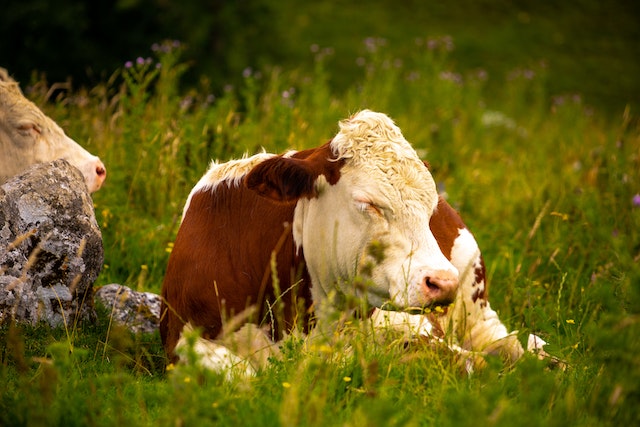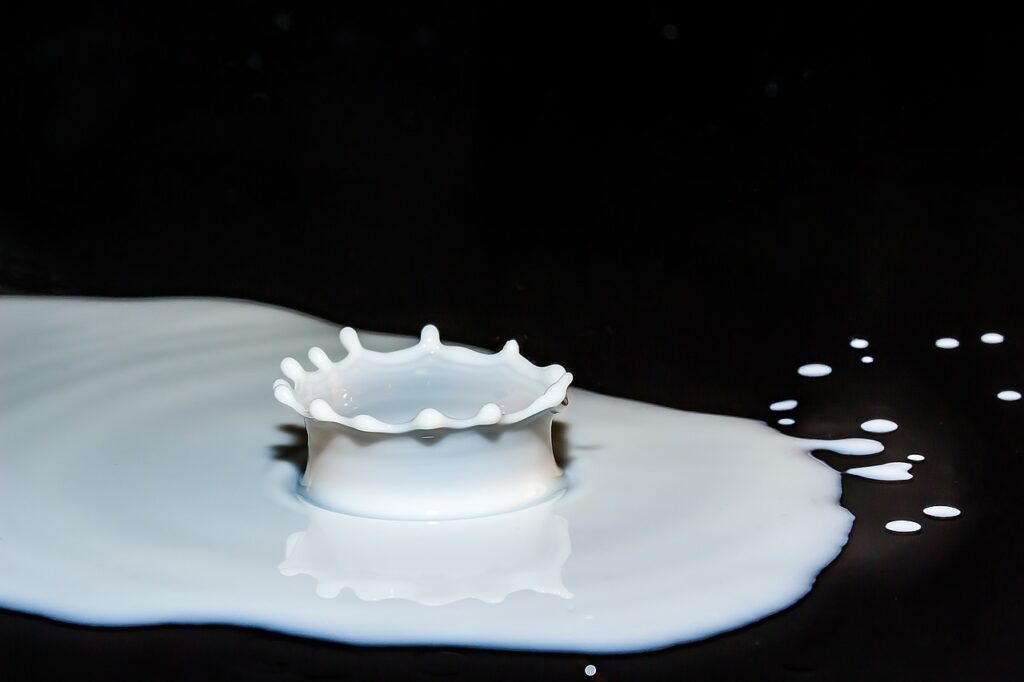According to recent scientific research , a glass of milk contains up to 20 various medicines, including painkillers, growth hormones, and even antibiotics.
The research was conducted with the help of a highly sensitive test and found out that sample cow and goat milk contained a range of chemicals for illnesses treatment. However, the percentage of drugs was too small and couldn’t affect anyone who would drink the milk. Still, the results prove that the food chain contains chemicals created by mankind.
The cow’s milk contained the highest percentage of chemicals. The scientists supposed that cattle were given antibiotics and growths hormones. Other reasons could be cattle feed or farm contamination.
20 samples of goat, cows, and breast milk purchased in Morocco and Spain were analyzed by the Spanish and Moroccan researchers. They published the results of their research in the Journal of Agricultural and Food Chemistry, showing that cow’s milk contained residues of anti-inflammatory drugs (ketoprofen, niflumic acid, and mefenamic acid), which are used as painkillers both in people and animals.
The samples contained the hormone 17-beta-estradiol, the form of estrogen, the sex hormone. The head of the scientists’ team Dr. Evaristo Ballesteros from the University of Jaen, Spain, said that their techniques would be helpful for checking the other food types safety. It could be helpful for food quality control laboratories, while they could detect medicines before they enter our food chain.
The samples of goat’s milk contained niflumic acid, as well as breast milk, contained the residues of naproxen and ibuprofen (painkillers), triclosan (antibiotic), and some hormones.
The test took 30 minutes and is the most sensitive of a kind. The same test could be used for checking milk produced in Britain and northern Europe.
Antibiotic residues and milk hygiene
The milk producers’ guidance on hygiene standards issued by the European Union requires producers in the European Union to test milk for antibiotic residues and meet regulations. The hygiene legislation covers food chain from farm to table, including the health and cleanliness of the animals, milking hygiene, and raw drinking milk controls.
Regulation No 853/2004 is aimed to test milk for antibiotic residues. It requires food business operators to ensure raw milk not to be placed on the market if containing antibiotic residues in the limits exceeding the regulated ones. That guidance explains the requirements and what does an antibiotic screen test failure mean. It also states who is to be notified in case of the test failure.
Antibiotics in milk FDA
In 2009, FDA and National Conference on Interstate Milk Shipments approved the Neogen Corporation (NASDAQ: NEOG) quick BetaStar US test for dairy antibiotics in milk. It allowed milk producers and processors in the USA to use the test in order to meet the FDA regulations requiring testing milk for dairy antibiotics. The test is able to detect dairy antibiotic residues in the beta-lactam group very quickly and easily. The test doesn’t require any training or equipment and delivers really accurate results. The BetaStar test is used in about 40 countries around the globe.
That test is used on the farm, tanker, or in the laboratory and is approved by the AOAC Research Institute.
Antibiotics are used to treat various cows’ infections, such as mastitis. Milk producers have been pressured to increase milk production lately. The pressure caused more infections, and more antibiotics to treat them. Approximately 95% of all milk antibiotic contamination is caused by the beta-lactam antibiotics group.
BetaStar US test includes TetraStar (a dairy antibiotic test for tetracycline), rapid milk allergen tests, rapid foodborne pathogen and indicator organism tests, and an unequaled sanitation monitoring system. All of these tests ensure the quality and safety of milk.
The tolerances for animal drugs in milk
According to regulations, any cow getting antibiotics should be milked separately and this milk is to be thrown out and can by no means be sold or consumed. Antibiotics have a different period of time before their traces leave the body, whether it is a cow or a human. When the period is over, the farmer tests the milk. The milk can be cold only when this milk is totally free of all medicine residues. Regardless of whether the milk is organic or not, it should be tested several times before appearing on the market, on the farm, and at the milk processing plant. Once the milk tests positive for any medicine residues, it should be thrown out. When milk is antibiotic-free, any dairy products, including yogurt or cheese won’t contain antibiotics as well.
The tolerances for animal drugs in milk are as follows:
- Amoxicillin – 10
- Neomycin – 150
- Ampicillin – 10
- Novobiocin – 100
- Bacitracin – 500
- Penicillin – 0
- Cephapirin – 20
- Pirlimycin – 400
- Ceftiofur – 100
- Sulfadimethoxine – 10
- Cloxacillin – 10
- Tetracyclines – 300
- Dihyrdrostreptomcyin- 125
- Tylosin – 50
- Erythromycin – 0
- Clopidol – 20
- Moxidectin – 40
- Eprinomectin – 12
- Thiabendazole – 50
- Fenbendazole – 600
- Tripelennamine – 20
- Flunixin – 2
Full information on antibiotics tolerances in milk can be found on FDA website.
New FDA regulation
The FDA is going to ban all medically important antibiotics to use for enhancing growth or feed efficiency. https://www.fda.gov/downloads/AnimalVeterinary/ComplianceEnforcement/UCM435759.pdf In the future, they are going to allow the antibiotic use only to treat, control, or prevent disease and only when having a prescription from a licensed veterinarian. No residues of antibiotics are no longer allowed in milk or dairy products, regardless of whether they were used for growth or disease treatment.
Why you can’t drink milk with antibiotics
Antibiotics residues in various foods can cause health issues, for example, allergy in sensitive people. Consumers often have allergy caused by penicillin, bone marrow aplasia caused by chloramphenicol, ototoxicity, and other problems.
However, antibiotic resistance remains the main concern, while it makes the treatment of both humans and animals more complicated. Antibiotics in milk are not that dangerous, but the antibiotic resistance they cause is. Regular consumption of milk and dairy products containing even low levels of antibiotics may cause bacteria to become resistant to the antibiotic.
Apart from all this, antibiotic residues in milk and dairy products lead to some huge technological problems in the dairy industry. Even small amounts of antibiotics in milk interfere with starter culture activity, what, in turn, disrupts the milk manufacturing process. The same residues are able to interfere with the methylene blue reduction tests and cause underestimation of the milk’s microbial load.
Any of the above-mentioned concerns may become the reason for major threats to society. Food safety depends on the veterinary drug residues’ presence in our food.



This info is quite horrifying..& i love milk!
No more for me!